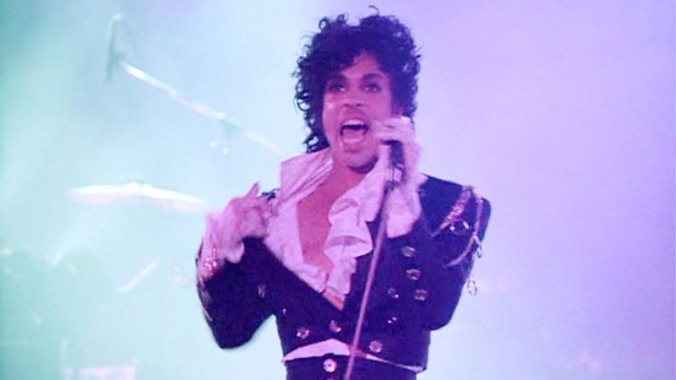The club that launched Purple Rain, The Replacements and Soul Asylum
How important is First Avenue to the city of Minneapolis? So much so that when the club faced bankruptcy in 2004, only months after its owner fired everyone and seemingly tanked the entire enterprise, the mayor himself stepped in to spearhead the effort to buy it out, guaranteeing that the nightclub that had made its home there since 1970 would continue to be the center of the town’s music scene. At the show celebrating its reopening, the mayor “even did a stage dive,” according to longtime stage manager Conrad Sverkerson. You’d be hard pressed to find many rock clubs that can provoke that kind of enthusiasm from local government officials.
“First Ave.” has been a crucial part of Minneapolis’ cultural identity since its opening night, April 3, 1970, when Joe Cocker played two shows at what was then called The Depot—so named because of the round, former Greyhound bus station it occupies. That auspicious debut paved the way for several decades of the biggest names in music playing its stage, to the point where hardly anyone can be said to have “made it,” in Minneapolis or otherwise, without eventually playing a set there.
Of course, in spite of its importance to music history, my first—and honestly, only—knowledge of the venue was as the setting for Purple Rain, the 1984 film where Prince delivered electric performances of his most famous songs, when he wasn’t abusing Apollonia or generally being a dick. Along with hosting some of the recordings for the album, the club served as the setting for almost the entire movie, transforming First Ave. into a magical world populated by vacant-eyed New Wave waifs, their lives centered on the seemingly nightly battle of the bands between Prince and Morris Day’s The Time. To someone who’s seen that movie as many times as I have, it was difficult to comprehend that First Ave. was real.
Of course, First Ave. differs slightly from the way it’s portrayed in Purple Rain. There are no vast dressing rooms draped in silk, for example, just a recently renovated former broom closet (the same one where Wilco begins to fracture in I Am Trying To Break Your Heart). The stage, balconies, and checkered tiles remain the same, but the funky Paisley Park walls were all painted black as part of the 2004 renovation, and there definitely aren’t any linen-covered dining tables where one could, say, impress a lady by ordering the club’s finest bottle of champagne, while your romantic/musical rival sings a very poignant song in her direction.
But as far as being the nexus of the Minneapolis music scene, nothing about First Ave. has changed. When we talked to Dan Murphy, guitarist for Soul Asylum and a guy who’s been coming there for decades, he remained as in awe of its power and importance as when he first attended as a teenager. These days, Murphy is on a first-name basis with seemingly everyone who works at the club, introducing us to Sverkerson and staff photographer Daniel Corrigan (whose iconic shots fill the next-door Depot Tavern), and recounting the many times he watched bands like The Replacements and Hüsker Dü tear up the club’s punk-friendly front room, The 7th Street Entry, then sneak into the main area to swipe drinks abandoned by disco dancers. He and Sverkerson also took us backstage to look at the setlists from all the bands who’d played there, which remain taped up in a patchwork quilt along the wall, and then down into the Entry’s dungeon-like basement green room, where a thousand punk bands have partied. (It stank of stale beer and cigarettes, and bore a dilapidated “couch” in name only—just as you would hope.)
The other thing that remains immutable about First Ave. is its galaxy of silver stars on the club’s exterior, each bearing the name of a famous band that’s played there in its 40-plus years of operation. When the club underwent its recent facelift, those stars were all scrubbed and then replaced—and even though we prodded him several times, Sverkerson refused to say how they decided who was deemed worthy of being revived. (He claimed he had no influence, other than making sure that the stars surrounding his own—which marks the door leading to his office—were friends of his, such as Soul Asylum, Prince, and R.E.M.) The end result is a beyond-weird mix: Outside of somebody’s insufferable mash-up, those walls are probably the only place you’ll see Nine Inch Nails rubbing shoulders with DJ Jazzy Jeff And The Fresh Prince, Ray Charles within spitting distance of Slayer, or Nirvana not too far from Menudo. But then, that’s what makes First Ave. a place worth preserving—not to mention worth visiting.
